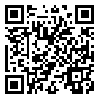Volume 17, Issue 4 (2013)
CLR 2013, 17(4): 85-106 |
Back to browse issues page
Download citation:
BibTeX | RIS | EndNote | Medlars | ProCite | Reference Manager | RefWorks
Send citation to:



BibTeX | RIS | EndNote | Medlars | ProCite | Reference Manager | RefWorks
Send citation to:
Shobeiry (Zanjani) S H, Qaidary2 Q. Comparative Study of the Legal Status of "New Use Patents" in the Field of Patent Law. CLR 2013; 17 (4) :85-106
URL: http://clr.modares.ac.ir/article-20-5574-en.html
URL: http://clr.modares.ac.ir/article-20-5574-en.html
1- 1. Assistant Professor, Department of Intellectual Property Law, Faculty of Law, University of Qom, Qom, Iran
2- 2. Master student in Intellectual Property Law, Department of Intellectual Property Law, Faculty of Law, University of Qom, Qom, Iran
2- 2. Master student in Intellectual Property Law, Department of Intellectual Property Law, Faculty of Law, University of Qom, Qom, Iran
Abstract: (9527 Views)
The patents’ term prolongation through protecting the new detected uses is the problematic matter that has been seriously attended by the developed countries in recent years. Iranian legislators’ uncertainty toward the subject within the respective legislatures illustrates the legal importance of taking a stance, which is consistent with the primary principles of patent law and international obligations. The present article, aiming at finding a comprehensive approach, surveys the legal status of the mentioned emerging issue at three levels i.e. international (Trips agreement), regional (European Patent Convention and Andean :union:), and territorial laws. Based on the findings of this work, the uncontested and primary principles of patent law entail that the new uses either within opponent or proponent jurisdictions must be posed as “process invention”. Accordingly, the opponent jurisdictions via narrowing, and proponent jurisdictions via extending the domain of legal definition of “process invention” shall adjust and restrict the protect ability of these intellectual achievements
Received: 2013/12/16 | Accepted: 2014/03/19 | Published: 2014/03/21
| Rights and permissions | |
 |
This work is licensed under a Creative Commons Attribution-NonCommercial 4.0 International License. |







